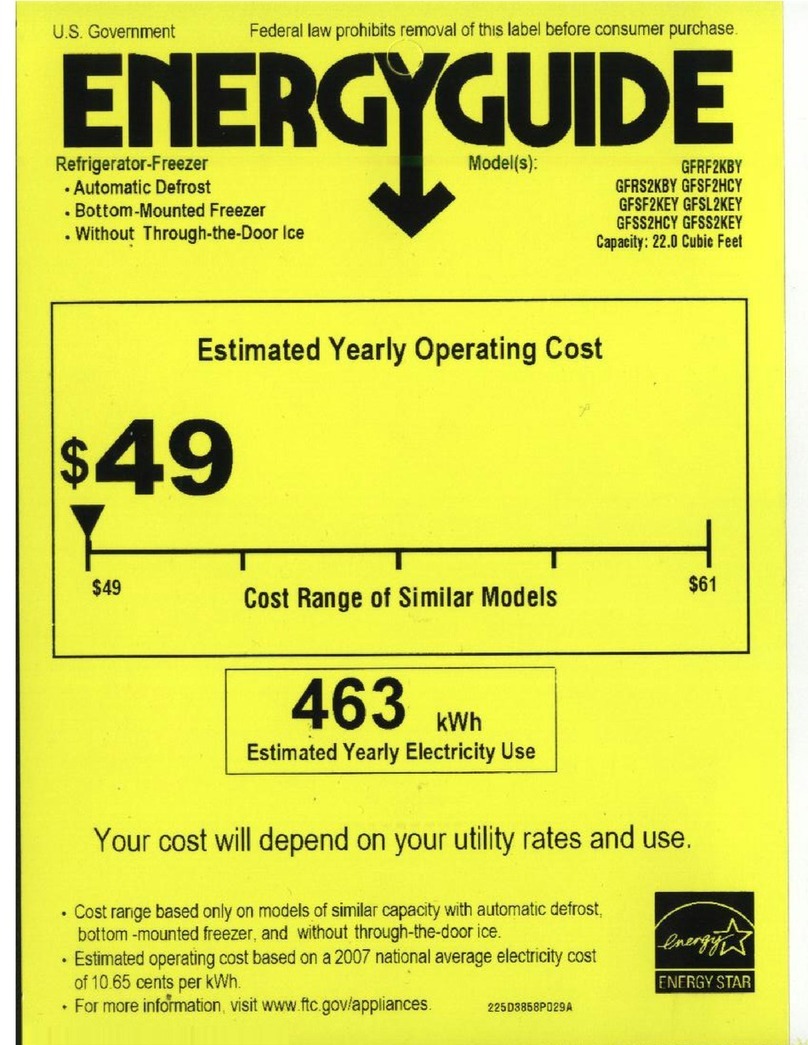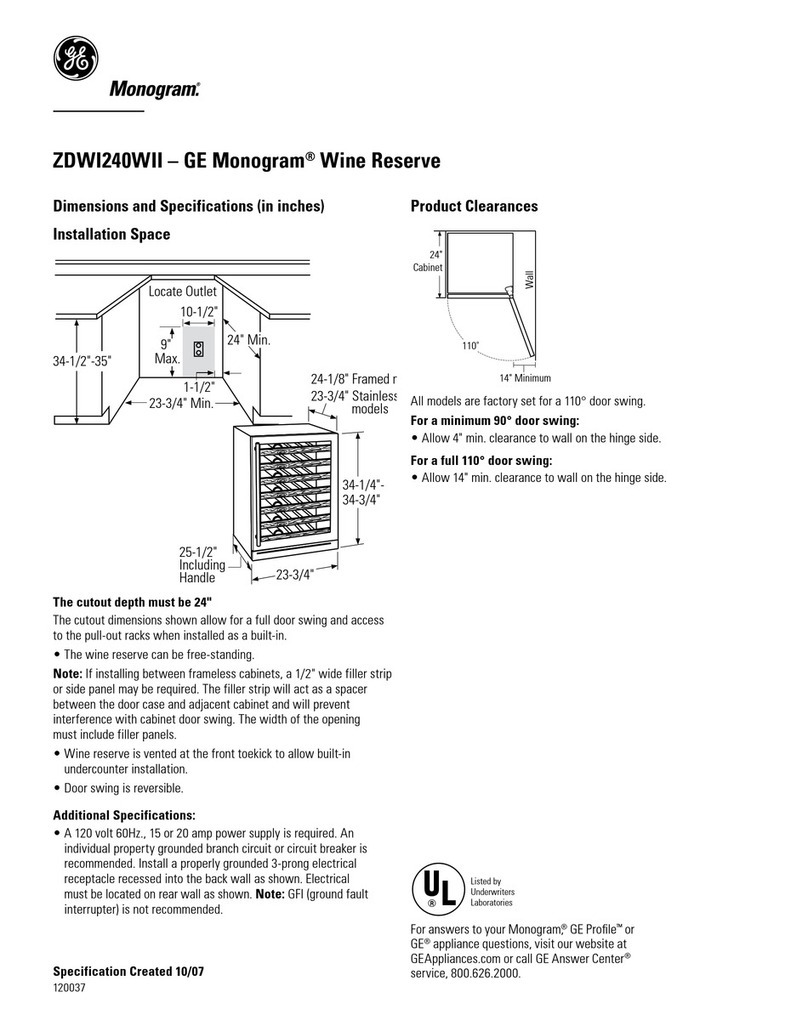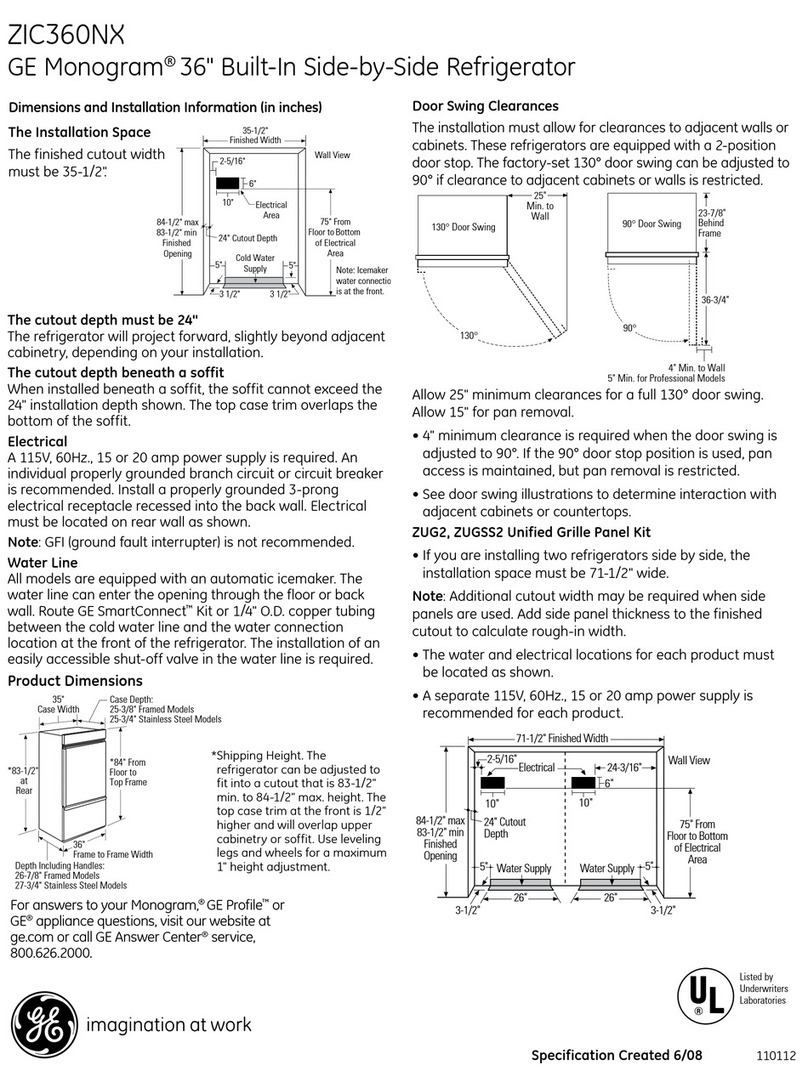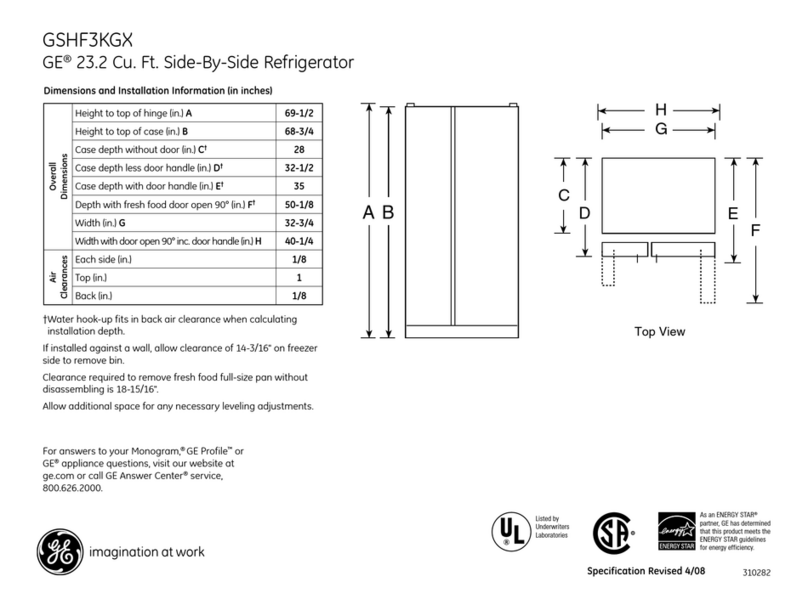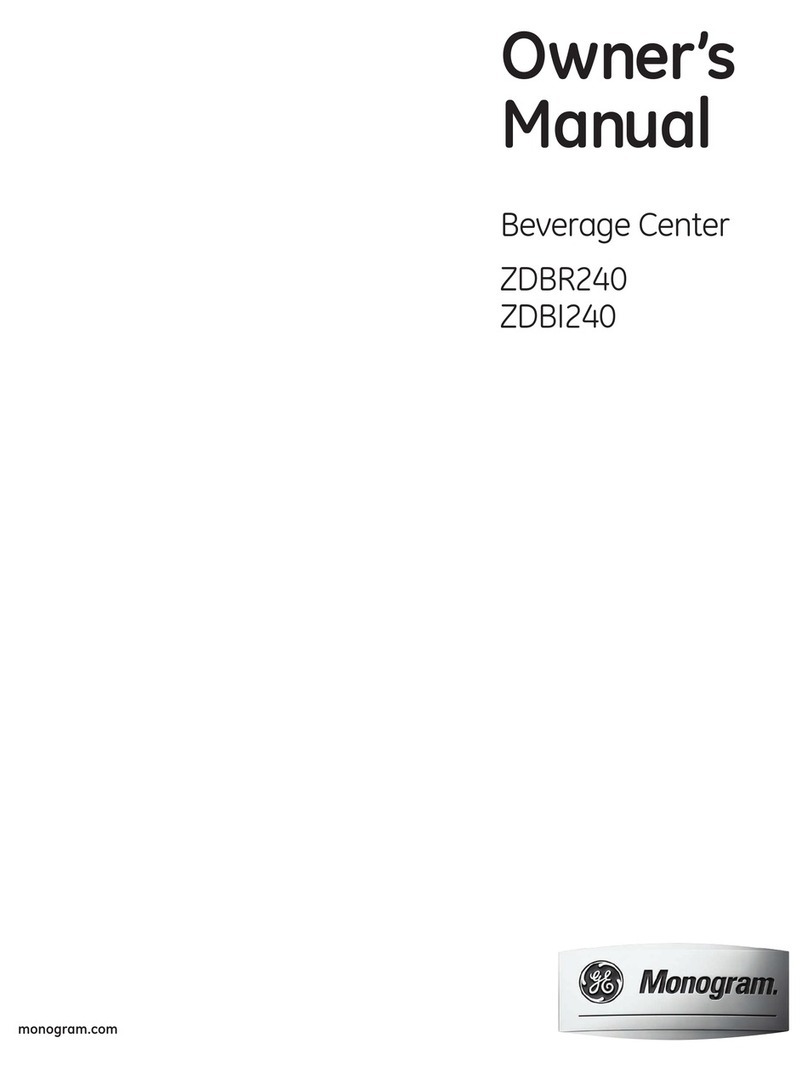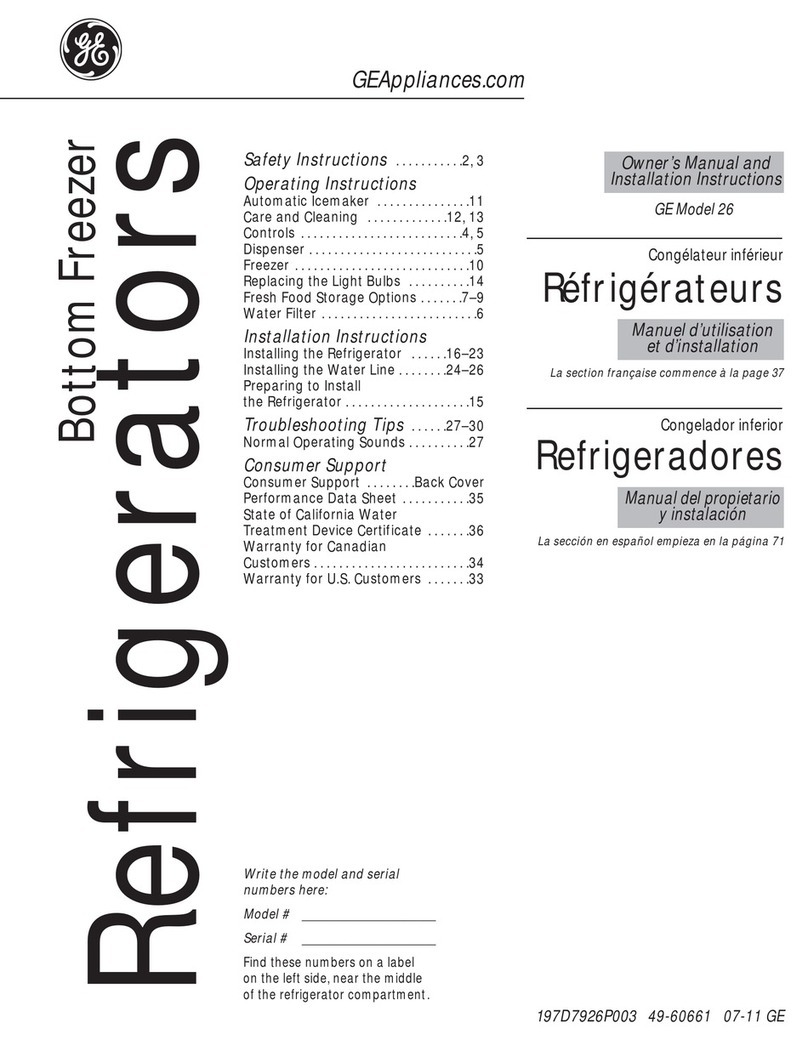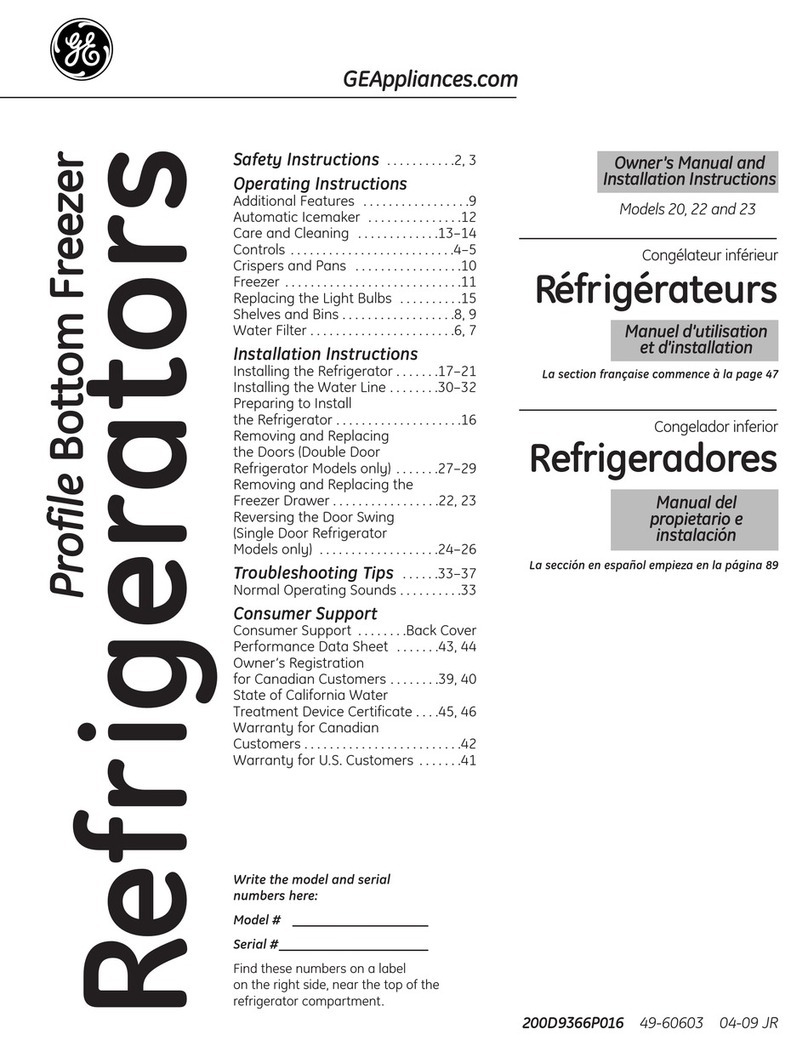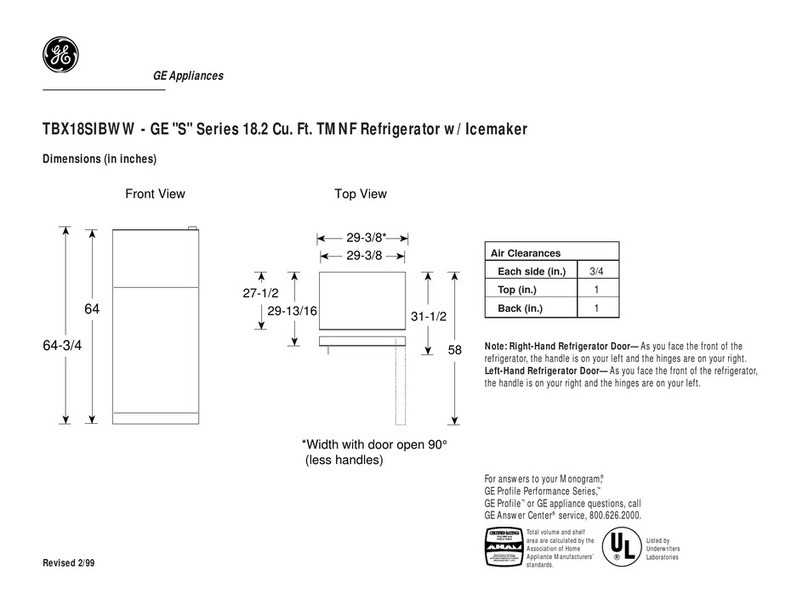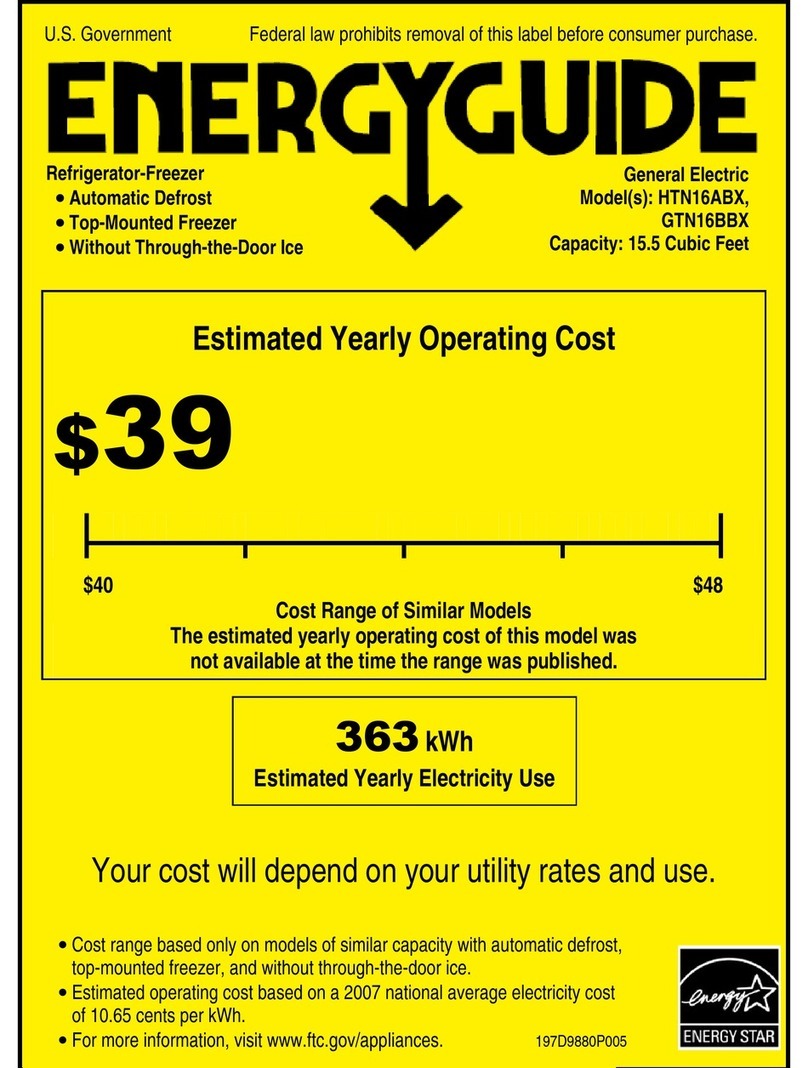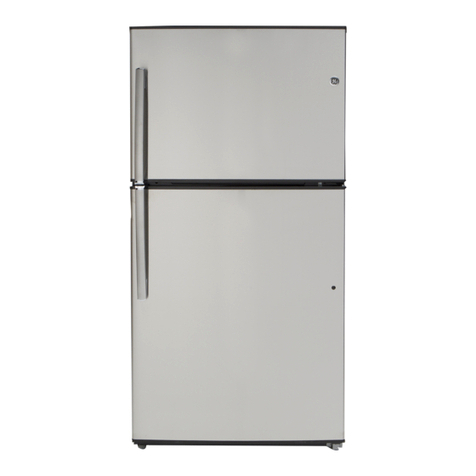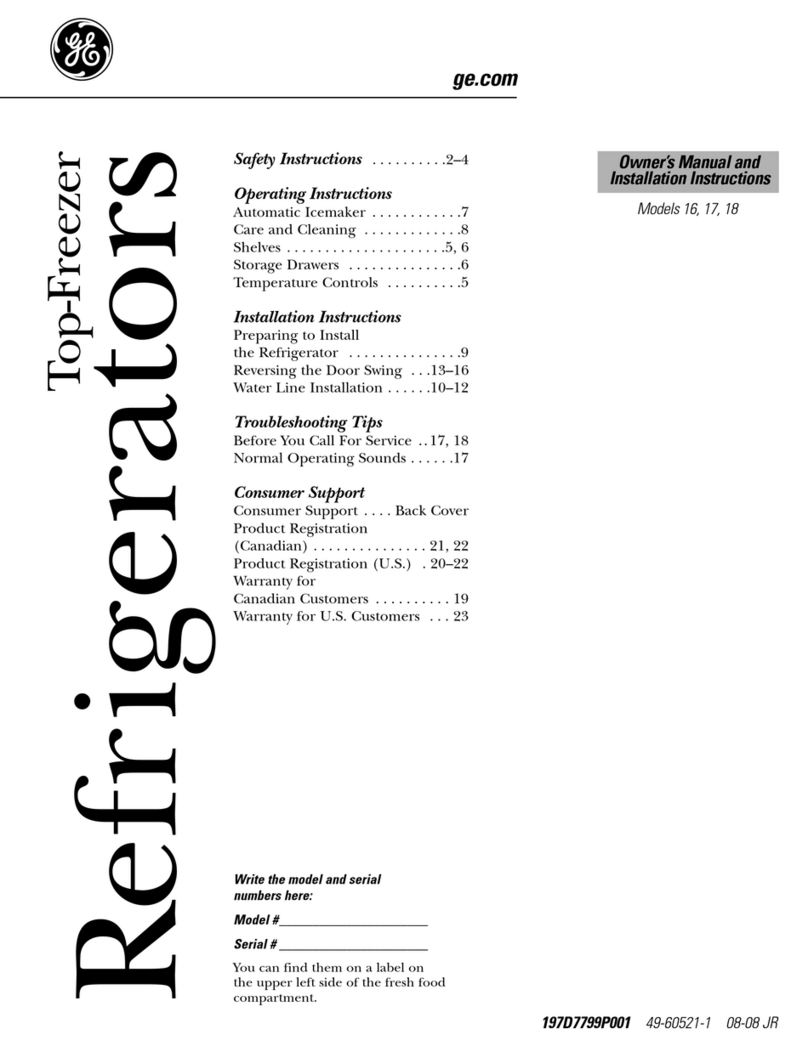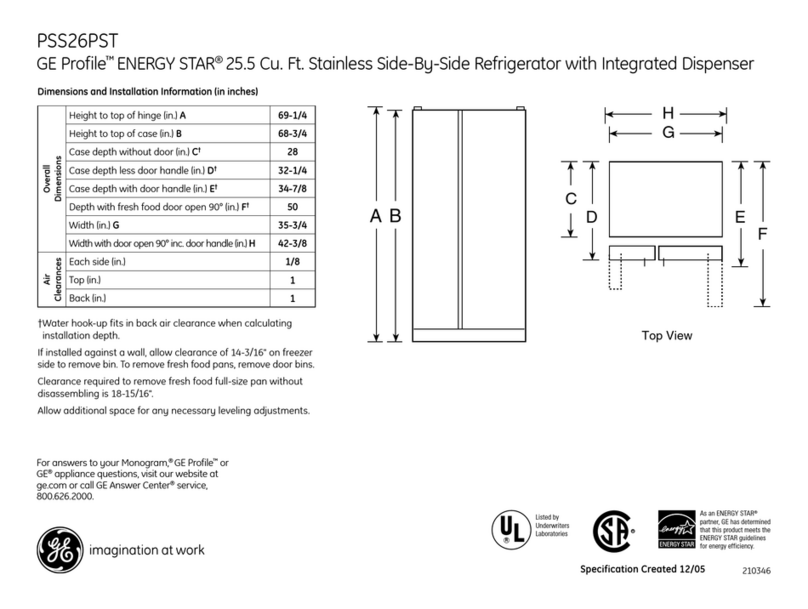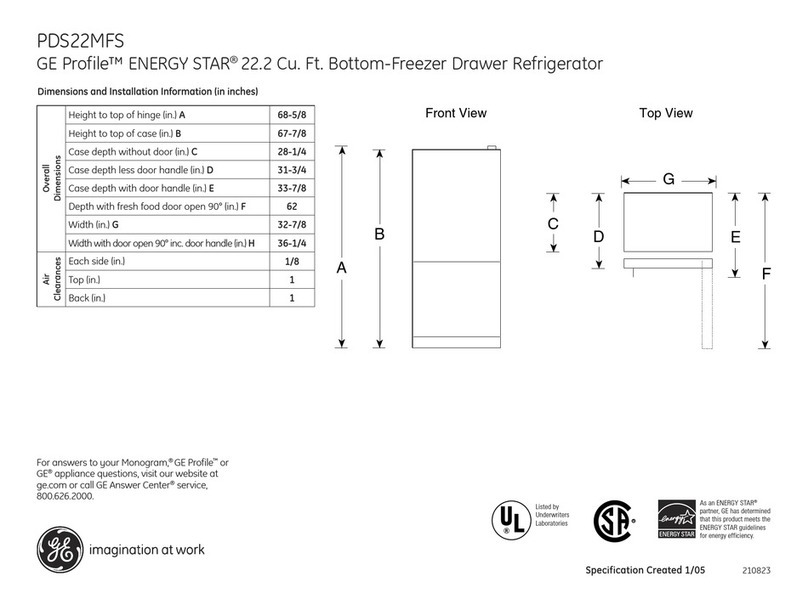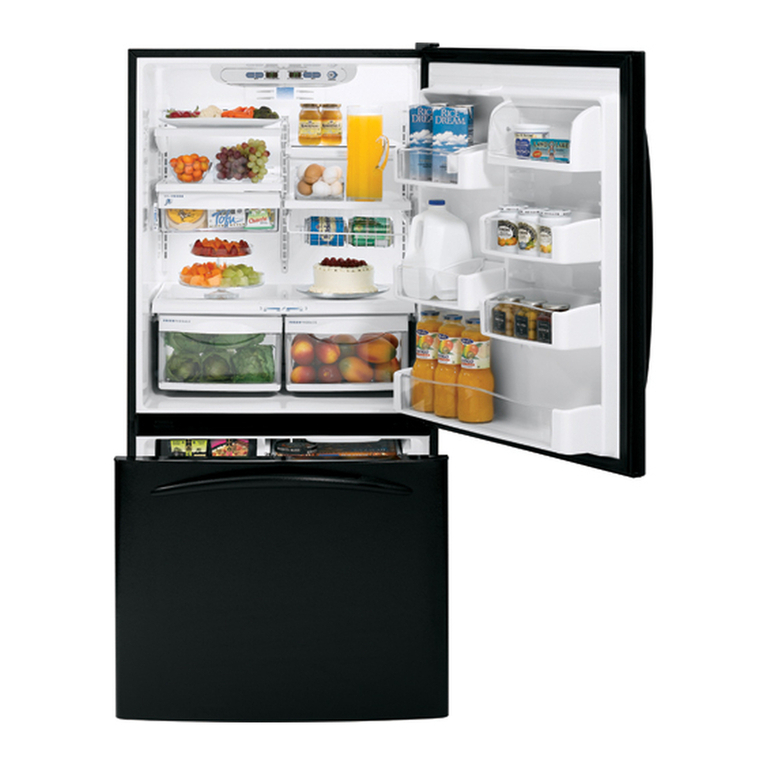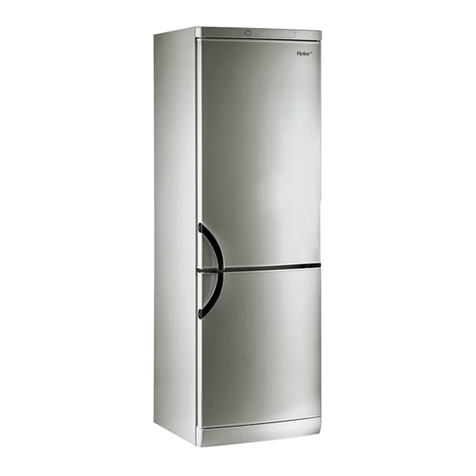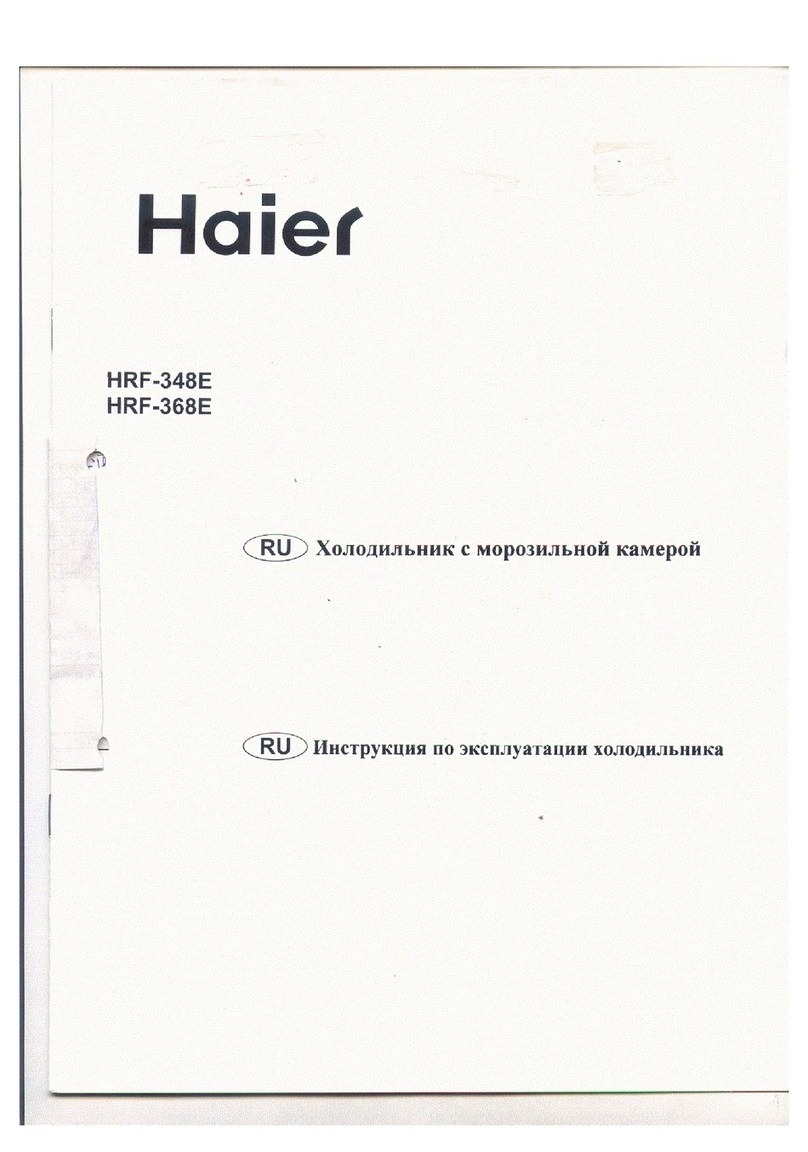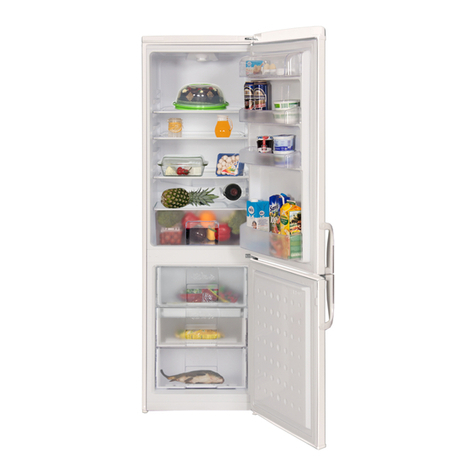2
Installation
These instructions were provided to aid
you in the installation of your refrigerator.
Measuring the opening
A1⁄2" of air space should be provided for
the top and back of the unit to allow for
proper air circulation. When installing
your unit, measure carefully.
Subflooring or floor coverings (i.e. carpet,
tile, wood floors, rugs) may make your
opening smaller than anticipated.
Some clearance may be gained by using
the leveling procedure under How to
Level Your Refrigerator.
IMPORTANT: If unit is to be installed into
a recess where top of unit is completely
covered, use dimensions from floor to top
of hinge cap to verify proper clearance.
Transporting your
refrigerator
Follow these tips when moving the unit to
final location:
•NEVER transport unit on its side. If an
upright position is not possible, lay unit
on its back. Allow unit to sit upright for
approximately 30 minutes prior to plug-
ging unit in to assure oil return to the
compressor. Plugging unit in immedi-
ately may cause damage to internal
parts.
•Use an appliance dolly when moving
unit. ALWAYS truck unit from its
side–NEVER from its front or back.
•Protect outside finish of unit during
transport by wrapping cabinet in blan-
kets or inserting padding between the
unit and dolly.
•Secure unit to dolly firmly with straps or
bungee cords. Thread straps through
handles when possible. DO NOT over-
tighten. Overtightening restraints may
dent or damage outside finish.
Selecting the best
location
Observe these points when choosing the
final location for your unit:
•DO NOT install refrigerator near oven,
radiator or other heat source. If not
possible, shield unit with cabinet mate-
rial.
•DO NOT install where temperature
falls below 55° F (13° C). Malfunction
may occur at this temperature.
•Make sure floor is level. If floor is not
level, shim rear wheels of unit with a
piece of plywood or other shim material.
•To assure proper door closure, verify
that the unit is leveled with a 1⁄4" tilt to
the back.
Removing the doors
and hinges
Some installations require door removal
to get refrigerator to final location.
To avoid electrical shock which can
cause severe personal injury or death,
observe the following:
•Disconnect power to refrigerator
before removing doors. Connect
power only after replacing doors.
WARNING
To avoid damage to walls and flooring,
protect soft vinyl or other flooring with
cardboard, rugs or other protective
material.
CAUTION
➢Unplug power cord from power
source.
➢Remove toe grille and bottom bracket
cover.
•Open freezer door as wide as
possible.
➢Remove top hinge cover from refriger-
ator door by removing Phillips screw.
•Retain screw and cover
for replacement.
➢Unscrew 5⁄16"hex head screws from
top hinge to remove hinge.
•Retain all screws for later use.
➢Lift refrigerator
door from center
hinge pin.
➢Hold freezer door in place while
removing center hinge pin with a 5⁄16"
hex nut driver. Remove freezer door.
•Retain hinge pin for later use.

